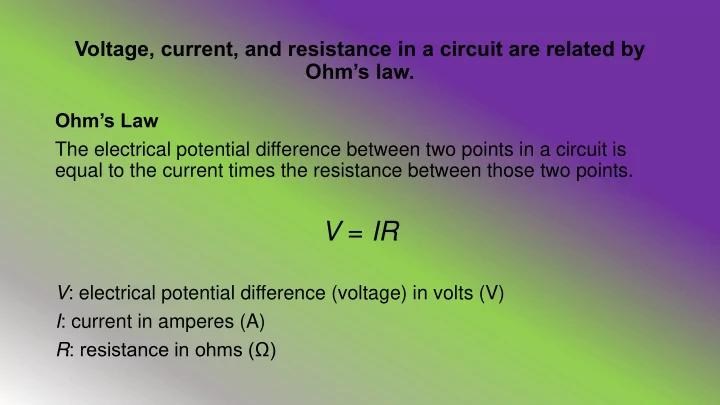

Voltage, current, and resistance in a circuit are related by Ohm’s law. Ohm’s Law The electrical potential difference between two points in a circuit is equal to the current times the resistance between those two points. V = IR V : electrical potential difference (voltage) in volts (V) I : current in amperes (A) R : resistance in ohms (Ω)
Using Ohm’s Law You can rearrange the variables in Ohm’s law to calculate any of the other variables if you know the value of the other two. V = IR • To find resistance: R = V / I • To find current: I = V / R
Using Ohm’s Law: Sample Problem The filament of a light bulb has a resistance of 20 Ω. A 5.0 V battery is used in the circuit. What is the current? 1) Rearrange Ohm’s law ( V = IR ) into the formula to find current ( I ). V = IR I = V / R 2) Substitute the values for R and V into the formula: I = 5.0 V / 20 Ω I = 0.20 A The current is 0.20 A.
Discussion Questions 1. List the three symbols used in Ohm’s law. Explain what each symbol represents and give the units for each of the variables.
Activity • Looking at Current, Voltage and Resistance
Recommend
More recommend